The last time we tested a Specialized Status was back in 2014, and its burly build and surefooted ride really impressed us.
After a brief hiatus, it seems Specialized was keen to bring the Status back and offer mountain bikers a “no nonsense” machine that’s “as reliable as a tank”.
It’s designed to be as much fun as possible, no matter whether you’re at the bikepark or just blatting around the trails of your local wood. How does it ride? Read on for our first ride review or head to our launch article for all the tech info.
2021 Specialized Status 160 frame and suspension details
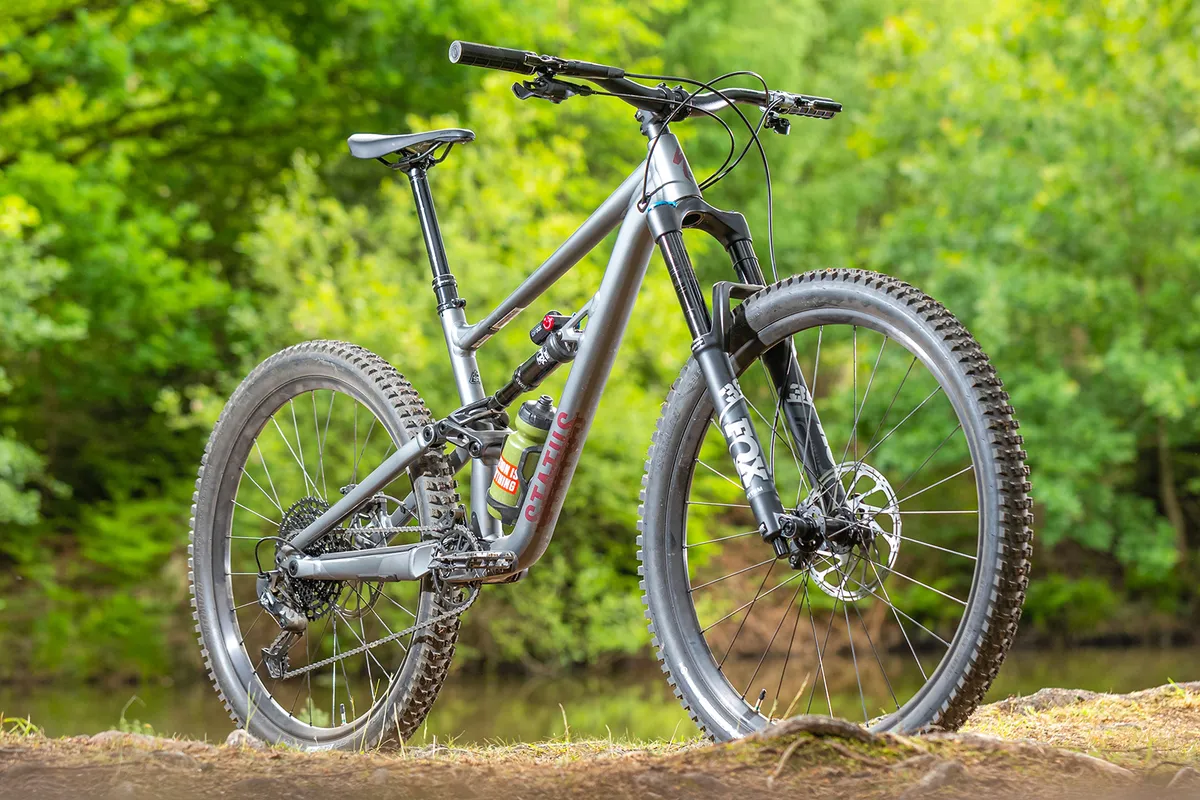
Unlike any of the previous models, the new Status embraces both modern wheel sizes and becomes one of a few bikes available off the shelf to sport a 29in front wheel and 650b rear wheel as standard. You know, business up front and party out back, and all that.
It’s a concept well-proven on the downhill World Cup circuit – Loic Bruni won both the World Champs and World Cup overall on a mixed wheelsize, mullet bike.
There’s 160mm of rear wheel travel on tap, which comes courtesy of Specialized’s FSR four-bar linkage platform and is controlled by a Fox DPX2 Performance rear shock.
The layout of the back-end is almost identical to the more trail-orientated Stumpjumper, though the Status gets a meatier rocker link and shock yoke to help ensure it can handle the abuse it was designed to take.
There’s not a strand of carbon to be found on the Status, partly in a bid to keep the cost down, partly to make it as robust as possible.

Instead, Specialized has crafted both the front and rear triangles from its M5 aluminium alloy, which the US brand claims to be “hard charging and hard wearing” – a real plus for those riders who are less precious about their bikes and are likely to send the bike cartwheeling down the hill from time to time when things go wrong.
Previously, Specialized offered a broader range of its popular do-it-all Enduro, which inevitably must have trodden on the old Status’s toes, likely explaining why the brand dropped the big-hitter some years ago.
However, its current Enduro line-up doesn’t include a single alloy frame option, seeing each and every bike made from carbon – which explains why the starting price is so high.
The latest Status – now more versatile than its predecessor – fills the price gap that the lack of alloy Enduros have left and offers much of the same in terms of capabilities.
Specialized states that the Status frameset is about “fewer frills but all the thrills”. Despite this, it's still opted to run the cables internally. This will, on the one hand, keep them well protected, but on the other makes maintenance that bit fiddlier when the time comes to replace them. It does help create a cleaner look overall, though.
2021 Specialized Status 160 geometry
Just like its Enduro, Demo and Stumpjumper EVO frames, the Status uses Specialized’s ‘S’ sizing, and comes in a choice of sizes from S1 to S5.
Rather than base the sizing on the seat tube length, Specialized uses the reach measurement (the distance from the centre of the bottom bracket to the centre-top of the head tube), and therefore ride feel, to help guide sizing choices.
As a result, seat tube lengths are kept relatively short compared to most other brands and are designed to work with the latest breed of long-stroke dropper posts – my S3 frame has a short seat tube of 420mm and comes with a 170mm travel dropper post.

As the seat tubes only grow by 20mm per size (though the S1 and S2 are both 400mm), I could easily, in theory at least, size up to the S4 and not suffer any of the usual upsizing consequences I’d normally struggle with – thanks to seat tubes that my little legs just won’t work with.
The Status 160 is sold with 150mm travel dropper posts on the S1 and S2 frames, while the S3 to S5 bikes all use a 170mm post.
In terms of reach, I opted for the S3 Status, simply because it’s just 2mm shorter than the S3 Enduro which works really well for my 172cm stature.
With that 650b rear wheel, though, the chainstays are considerably shorter than those used on the Enduro at just 426mm, which should help with manoeuvrability when the trail tightens up.
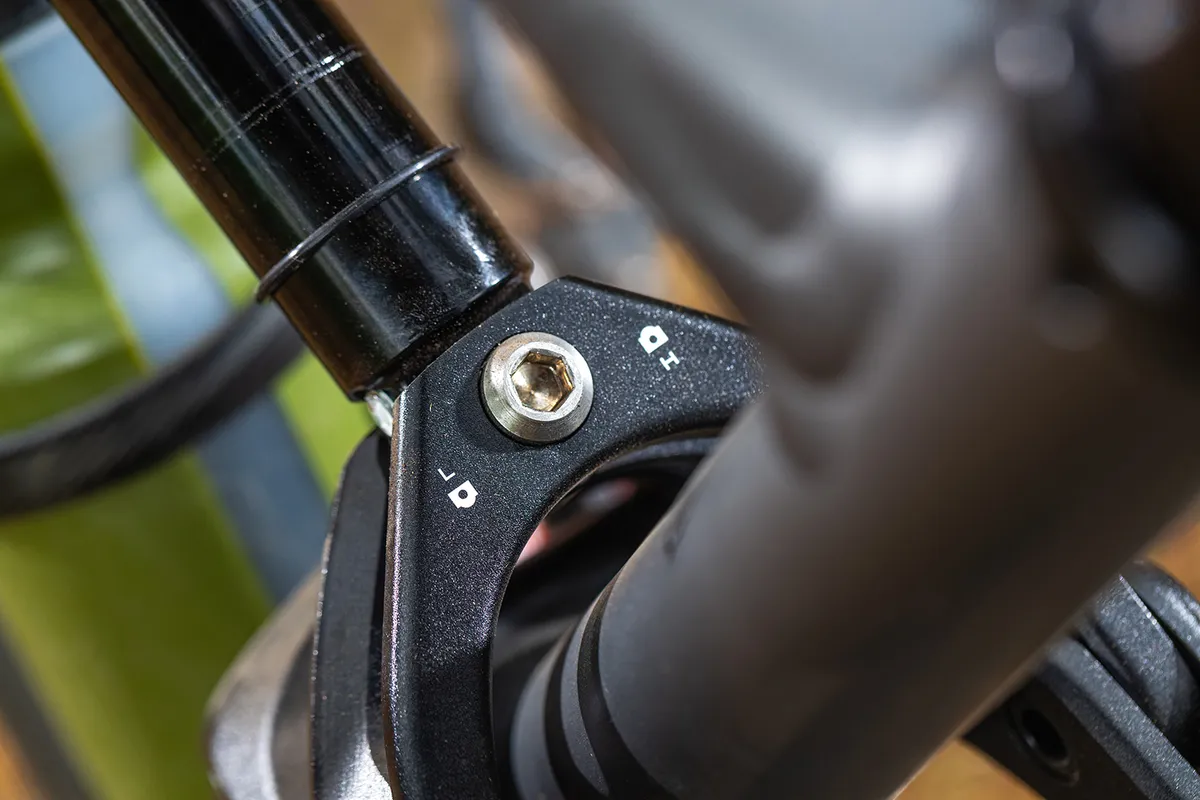
The Status also allows riders to switch between a high and low setting, thanks to the flip-chip at the base of the rear shock. It’s a quick and easy process and gives you 0.5 degrees of head- and seat-angle adjustment, and allows you to alter the bottom bracket height by 9mm.
In the low setting, the head angle is a super-slack 63.2 degrees, which is not only slacker than the Enduro but not a million miles away from the Demo DH bike. The bottom bracket sits at a low 338mm off the ground (low setting) which should help bolster cornering prowess.
The new Status 160 is designed around a 160mm travel fork with the now de rigour 44mm – it seems that the industry has settled on this offset measurement.
- Sizes (* tested): S1, S2, S3*, S4, S5
- Seat angle: 76 degrees
- Head angle: 63.2 degrees (low setting)
- Chainstay: 42.6cm
- Seat tube length: 42cm
- Top tube (effective): 62.3cm
- Head tube length: 11cm
- Bottom bracket height: 33.8cm (low setting)
- Wheelbase: 1,233mm
- Stack: 62.3cm
- Reach: 46.2cm
2021 Specialized Status 160 specifications
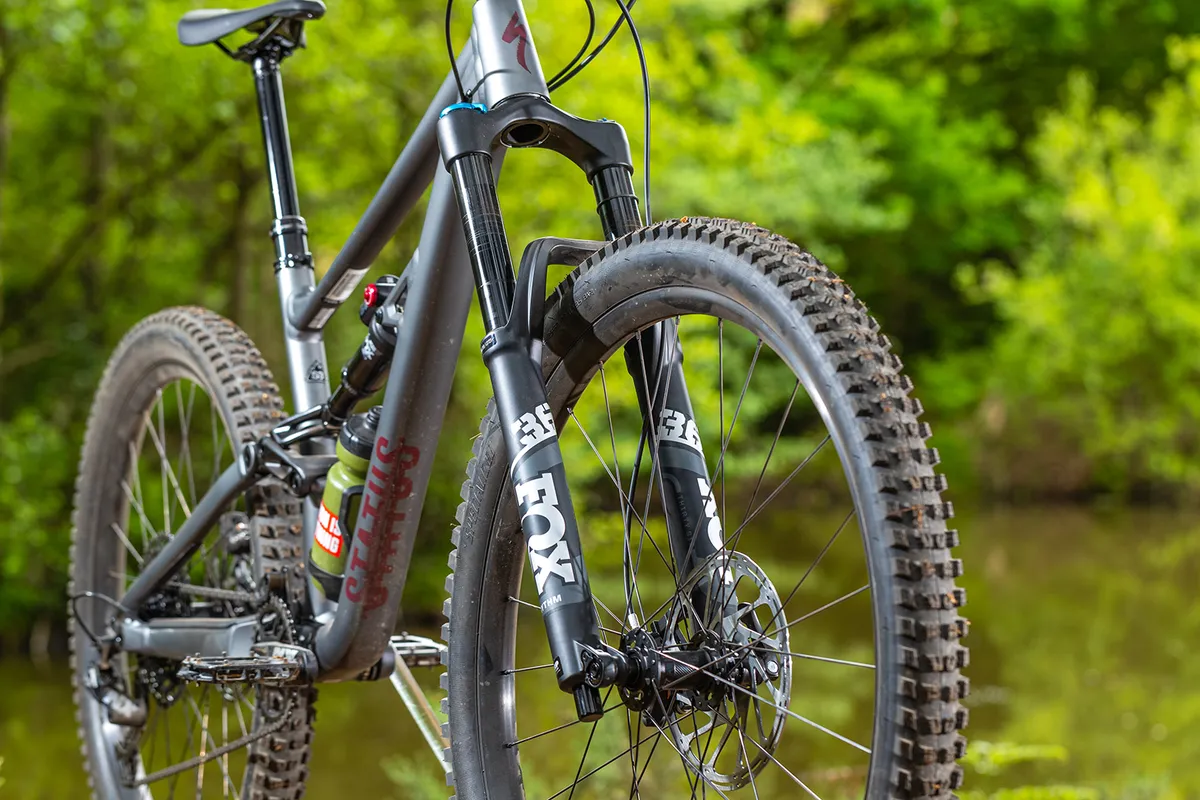
As this bike is all about fun, reliability and, of course, price, the Status doesn’t have the flashiest or most drool-worthy kit bolted to it, but does come stacked with solid, well-considered choices that should handle exactly the type of riding it was designed for.
The 160mm travel Fox 36 Rhythm fork uses the stiff, accurate 36mm chassis with the smooth GRIP damper. Adjustment might be basic (there’s a two-position compression lever and a rebound adjuster alongside being able to tweak air spring pressure and air spring volume) but it's consistently impressed in the past.
Gearing comes courtesy of SRAM’s NX Eagle. While this cheaper version of its 12-speed transmission still gets the whopping 50t bailout cog to help you winch up the steepest of climbs, it doesn’t share the same 10t smallest cog as seen on GX Eagle and above.

That means its range is 455 per cent rather than the wider 500 per cent, but this is less of an issue on a bike like this because it’s unlikely to be seeing lots of high-speed road or fireroad miles.
SRAM also takes care of stopping duties. As you’d hope on a bike of this ilk, Specialized has spent its money wisely and specced some choice anchors on the Status. The Code R brakes are both powerful and consistent, and generally found on much pricier machines, so it’s nice to see them included here.
Roval, Specialized’s wheel brand, supplies its alloy Traverse 29 and 27.5 rims, both of which feature a 30mm internal width. Wrapped around these are Specialized Butcher GRID TRAIL tyres.
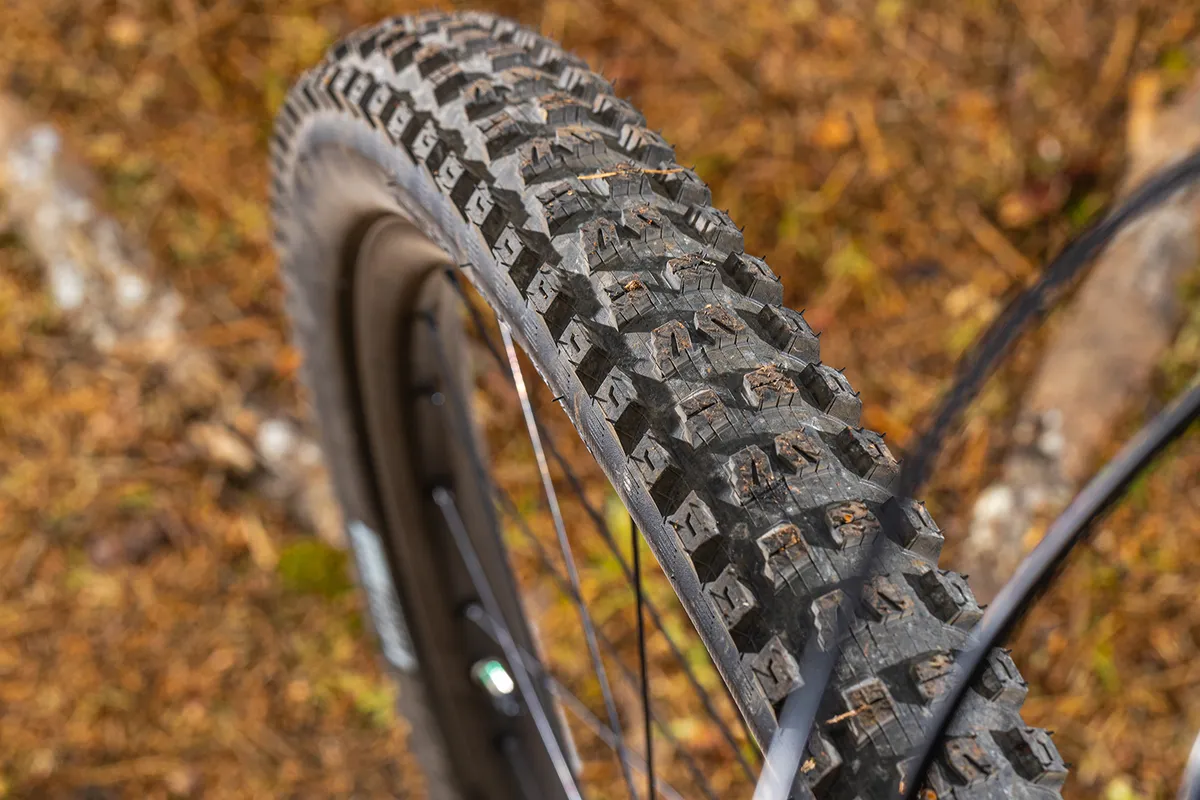
While the front measures up at 2.3in wide, there’s a bit more cushioning out back thanks to the 2.6in tyre, albeit in a smaller diameter. While the wheels don’t come set up tubeless, Specialized does include valves in the box to allow you to convert them straight away.
Alongside the tyres and wheels, Specialized also provides the bar (which comes in at a whopping 800mm), saddle and stem (and it’s all really good kit), but the grips come courtesy of Deity and its comfy, single lock-on Knuckleduster numbers.
It seems Specialized is no longer supplying its own dropper seatposts, instead opting to regularly spec the likes of this X-Fusion Manic post. While its actuation is light, and we know they’ve proven reliable in the past, I still prefer designs where the end of the cable clamps at the remote lever for ease of set up.
2021 Specialized Status ride impressions
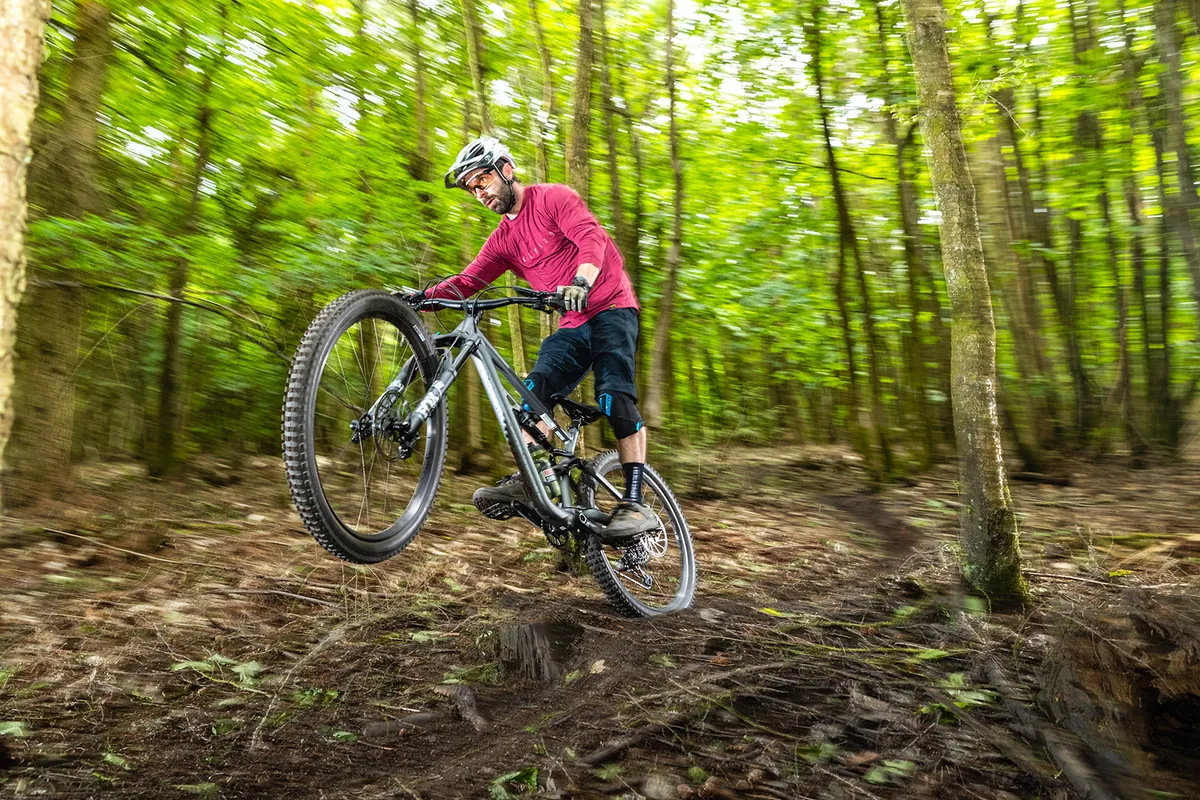
I rode the Status 160 on a mixture of technical and steep trails as well as some really chunky, higher-speed downhill tracks littered with lengthy root spreads, rocks and jumps.
Due to the pandemic restrictions imposed on the UK during the time I had the bike, I wasn’t able to ride all of my usual test tracks and trails, with Wales only opening up to those of us from England just days before I’m sat writing this and getting ready to return the bike. That meant just one trip to BikePark Wales to put it through its paces on longer, faster trails.
Specialized Status climbing performance
The Status feels like a bruiser of a bike from the outset. There’s a solidity that oozes through the bike and, from the first pedal stroke, its intentions are immediately obvious.
It’s no massive surprise then that the Status doesn’t feel like the sprightliest bike when pointed uphill. At 16.3kg, it prefers to winch up the climbs at a steady pace and you’ll want to flick the low-speed compression lever on the Fox DPX2 shock to calm the suspension bob down (which you can notice a little, even when seated) and up the efficiency.
With the shock firmed up, and thanks to that big 50t cog on the NX Eagle cassette, I found I could get the Status up most climbs without collapsing into a wheezing mess when I reached the peak.
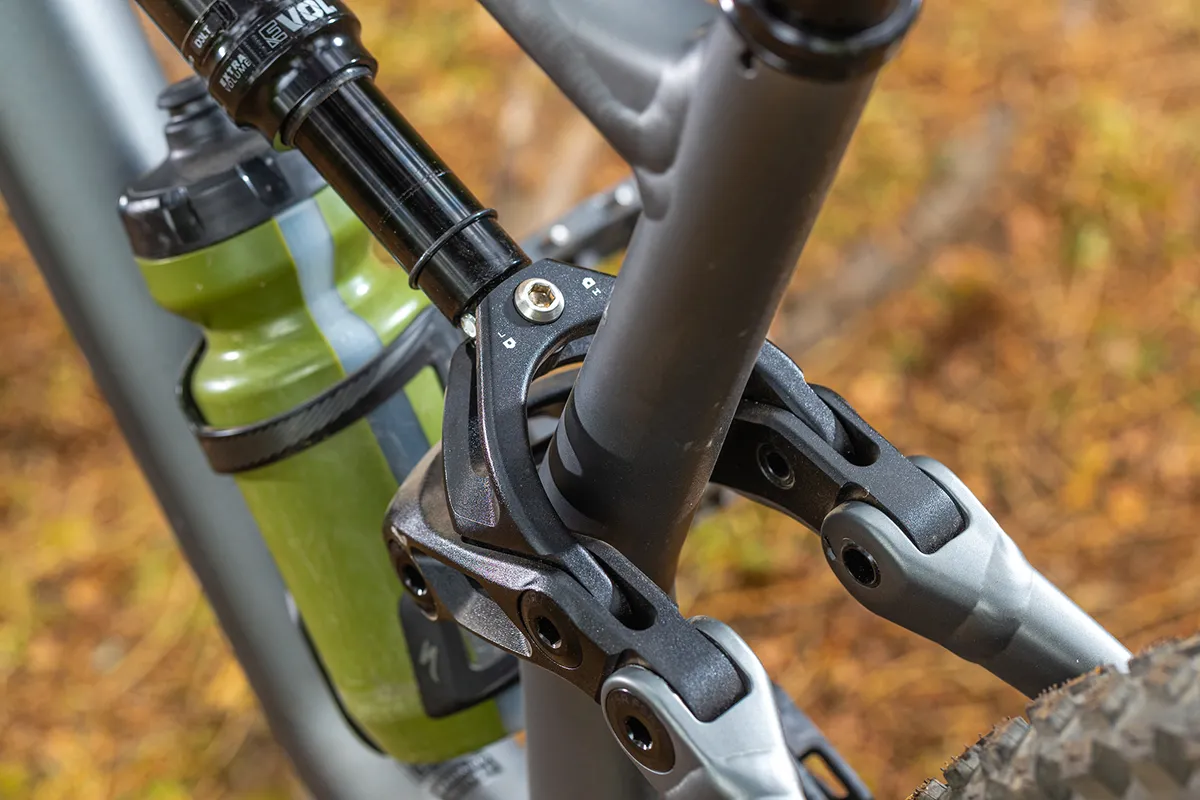
Specialized Status descending performance
This bike is designed to shine when going downhill, and it does, especially when the trail gets steep and chunky.
There’s a plush feel to the rear suspension, which naturally seems eager to get moving into its stroke. In fact, I ended up running less sag than usual – around 25 per cent – and reducing my fork pressure by around 5psi to better tune front and rear balance, which helps it swallow chunder impressively well and in a calm and composed manner.
Thanks to the long travel 170mm dropper post, I had no issues with the saddle getting in the way when descending steeper trails, and zero issues with the tyre buzzing my backside when hanging off the back of the bike after heavy landings – as I’ve had on the Enduro.
The stretched-out geometry works well in these rough, high-speed situations too and I never felt like the Status was lacking stability. It’s here where you’ll be grateful for the formidable braking power that comes courtesy of the Code R brakes.

Due to the robust build and supple suspension, the Status needs quite a bit of rider input and effort when riding flatter trails. It’s by no means sluggish, but this bike definitely favours more in the way of gradient.
The Fox 36 fork is a smooth operator too, and while it’s not quite as refined as the pricier GRIP2-equipped equivalent when tackling fast, repeated hits, it does the job more than well enough and doesn’t get overwhelmed easily.
Through the turns, the Status doesn’t offer quite the same well-centred ride position or poise as the Enduro (a bike that’s really stable and balanced in corners), due, in part, to the really short back-end and generous front-centre (centre of bottom bracket axle to centre of front wheel axle).
Specialized doesn’t change the rear centre (effective chainstay length) as the frame sizes increase, so this feeling will likely be more pronounced on the larger frame sizes. For reference, the Enduro, which sports very similar reach and front centre numbers, has a rear centre of 442mm.
Those proportions do take a little time to adapt to, but come with some added bonuses when compared to the more race-orientated Enduro.
Getting the front wheel of the Status lofted up and over an obstacle and simply just into the air to manual through a section is extremely easy and adds a liveliness to the ride feel that on the Enduro you need to work that bit harder to find. You can pick up and loft the Status from obstacle to obstacle too, and while it’s a big bike in feel and on paper, it’s agile enough when popping down a trail and easy enough to sling around in the air.
The Status is a seriously exciting bike and rides like a far pricier machine with some decent kit for the money
The low-slung chassis might lead to the odd pedal strike here and there, but it does help bolster corner confidence, especially when the conditions are loose or the corner lacks support.
While the Butcher tyres are decent enough in soft mud, they can feel a little skittish on damp hard-pack trails, especially if there’s the odd root or rock lingering.
I’d recommend making the switch to tubeless and ditching the stock tubes as soon as possible too, just to give a little extra piece of mind when pushing the bike in rockier sections because these aren’t the toughest tyres out there.
2021 Specialized Status bottom line
Overall, the Status is a seriously exciting bike and rides like a far pricier machine with some decent kit for the money – the Enduro Comp, which costs £4,500, features the same Code R brakes and NX Eagle 12-speed drivetrain.
Get used to the bike's proportions and you’ll be surprised by just how easy it is to throw this heavy-hitter around. It’ll handle big days in the bikepark and could be a formidable machine between the tapes too, though you may want to switch the tyres for something a little more predictable.
Most importantly, though, it’s a lot of fun to ride fast and isn’t afraid to get rowdy when the terrain deteriorates.
Considering the cost and just how well this bike rides, I’d take this over pricier options any day of the week and spend any left-over cash on a trip to a bikepark or, better yet, a holiday in the Alps.
Product
| Brand | Specialized |
| Price | £2399.00 |
| Weight | 16.30kg |
Features
| Fork | Fox 36 Rhythm GRIP, 160mm (6.3in) travel |
| Stem | Specialized Trail, 40mm |
| Frame | M5 aluminium alloy, 160mm (6.3in) travel |
| Tyres | Specialized Butcher GRID Trail GRIPTON 29x2.3in (f) and 27.5x2.6in (r) |
| Brakes | SRAM Code R (200mm rotors) |
| Cranks | SRAM NX Eagle |
| Saddle | Specialized Bridge Comp |
| Wheels | Roval Traverse 29 (f) and Traverse 27.5 (r) |
| Shifter | SRAM NX Eagle |
| Cassette | SRAM NX Ealge 11-50t |
| Seatpost | X-Fusion Manic, 170mm |
| Grips/tape | Deity Knuckledusters |
| Handlebar | Specialized alloy, 800mm |
| Rear shock | Fox DPX2 Performance |
| Bottom bracket | SRAM DUB |
| Available sizes | S1, S2, S3, S4, S5 |
| Rear derailleur | SRAM NX Eagle 12-speed |

